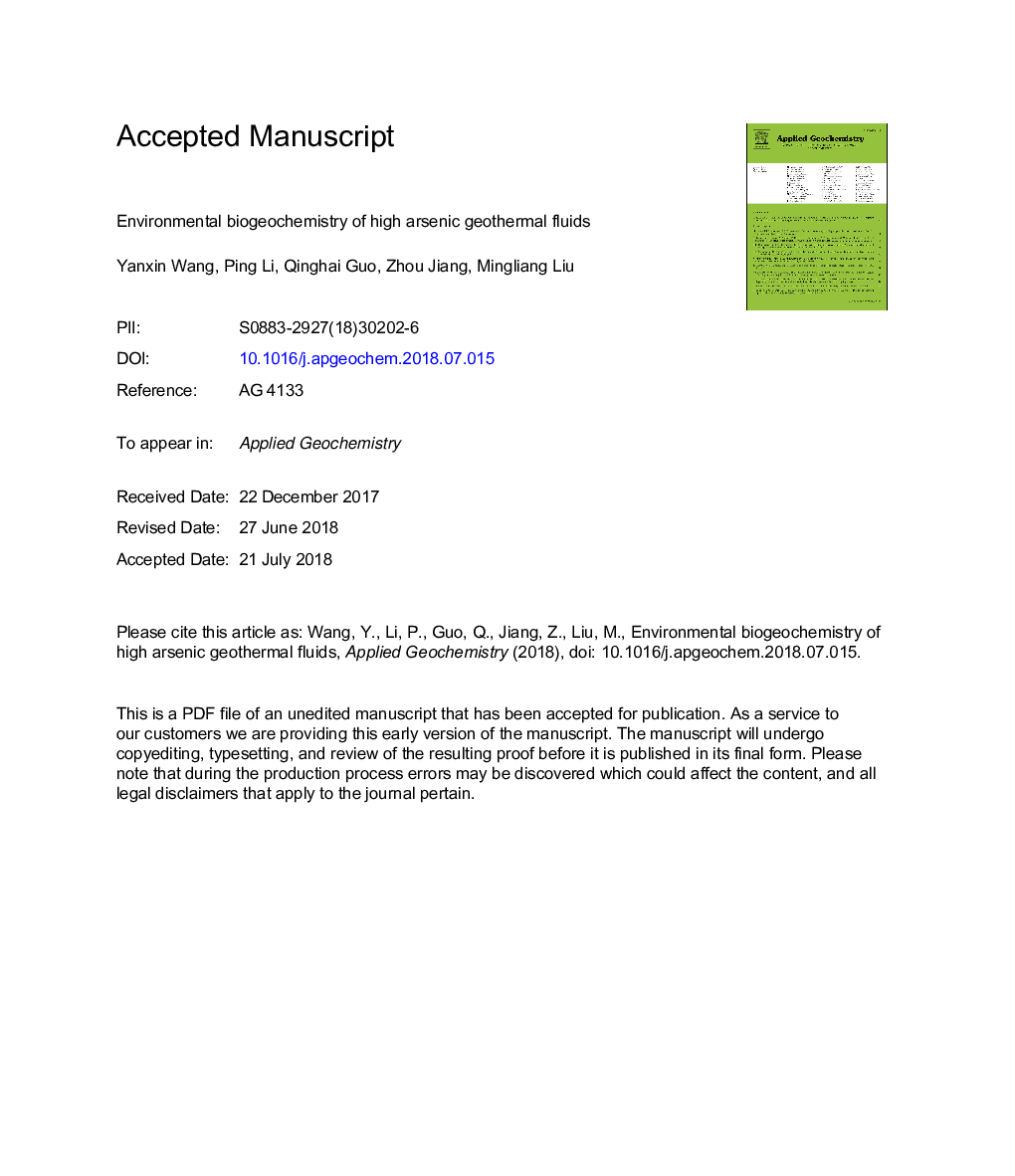| کد مقاله | کد نشریه | سال انتشار | مقاله انگلیسی | نسخه تمام متن |
|---|---|---|---|---|
| 8863023 | 1620194 | 2018 | 35 صفحه PDF | دانلود رایگان |
عنوان انگلیسی مقاله ISI
Environmental biogeochemistry of high arsenic geothermal fluids
ترجمه فارسی عنوان
بیوگرافی شیمی محیطی از مایعات زمین گرمایی آرسنیک بالا
دانلود مقاله + سفارش ترجمه
دانلود مقاله ISI انگلیسی
رایگان برای ایرانیان
کلمات کلیدی
آرسنیک ژئوترمال چشمه های آب گرم، بیوگرافی شیمی ظهور و توزیع، اثرات زیست محیطی، چالش فعلی، مرور،
موضوعات مرتبط
مهندسی و علوم پایه
علوم زمین و سیارات
ژئوشیمی و پترولوژی
چکیده انگلیسی
Arsenic (As) is a ubiquitous constituent in geothermal waters. Geothermal fluids with As concentrations ranging from 0.01 to tens of mg/L occur in different locations around the world, especially in geothermal systems along the boundaries of active plates. Leaching of reservoir rocks is the most important source of As in geothermal fluids. Arsenic exists in different As-bearing minerals in geothermal reservoirs with different temperatures, and the As concentrations in aqueous phase are affected by reservoir temperature to various degree. Arsenic concentration in geothermal waters depends on their genesis and geochemistry, with deep neutral chloride waters commonly containing much higher As concentrations than shallow acidic sulfate waters. During the upflow of geothermal fluids from the reservoir to the surface, As experiences a series of abiotic and biotic processes: oxidation, reduction, methylation and As-S redox cycling. Arsenic oxidation could happen under both aerobic and anaerobic conditions. Up till now a total of twelve aerobic As(III)-oxidizing bacteria have been isolated and thousands of clones harboring arsenite oxidase gene were detected in hot springs worldwide. As(III)-oxidizing rate of these isolates reached up to 1.27â¯Î¼M/min. In situ microbial arsenate reduction in geothermal environment was found in the bottom water of Mono Lake fed by hot spring waters, and several arsenate reducers were reported in some geothermal waters as well. Inorganic As could be methylated in hot springs by biological activity. Arsenic and sulfur often coexist in geothermal environments and undergo similar chemical and microbial redox transformations. In sulfidic hot springs, thioarsenates/thioarsenites can be formed preferentially by replacing several hydroxyl groups in arsenate and arsenite with thiol groups, respectively, and thioarsenites/thioarsenates could be reciprocally transformed regardless of the presence of sulfur. Microorganisms in hot springs have been found to exert a profound influence on As and sulfur speciation by using them as both electron donors and acceptors, forming various thioarsenate species. Geothermal As from depth can be released into the surface or near-surface environments either via discharge of hot springs or geothermal wastewater, or via natural mixing of geothermal waters with local shallow groundwaters. Some rivers contaminated by geothermal As were estimated to discharge tens to more than one hundred tons of As per year. Understanding the biogeochemical behaviors of As in geothermal systems before and after mixing with shallow groundwaters and surface waters is therefore critical for the protection of water resources and the environment.
ناشر
Database: Elsevier - ScienceDirect (ساینس دایرکت)
Journal: Applied Geochemistry - Volume 97, October 2018, Pages 81-92
Journal: Applied Geochemistry - Volume 97, October 2018, Pages 81-92
نویسندگان
Yanxin Wang, Ping Li, Qinghai Guo, Zhou Jiang, Mingliang Liu,
